The flavors and aromas of the holiday season set the mood for celebration, but they also provide some amazing health benefits. Read further for even more reasons to love the healing herbs and spices of winter that make us smile at this time of year…
There is something so enticing about the scent of cinnamon and pine, of citrus and bayberry…all of the aromas that evoke the magic of the winter season.
When the first crisp cold mornings start coming in, you know that the days of baking and hot chocolate are on their way!
Traditionally, winter gets a huge focus of attention from the beginning of December through New Year’s Day and then…. nothing. Winter scenes with snow and snowmen, ice skating, drinking hot chocolate, and so on, all fade from view after January 1. And that’s strange, because, technically, winter only begins on the winter solstice, December 21…so it gets a mere two weeks of appreciation and then it’s all down to business again from January 1 and on.
But, really, in most of the northern hemisphere, the coldest winter weather comes along in January and February, often into March and sometimes (depending on where you are) into April!
For better health, perhaps we should celebrate the beauty of winter for longer than just a few weeks. Otherwise, we miss out on the health benefits that the healing herbs and spices of winter bring to us.
Traditional health systems, such as Ayurveda from India, advise us that we should eat certain foods according to the seasons. And for winter, that includes foods that warm and nourish the body. These foods are a bit heavier and oilier, to counter-balance the cold, harsh, and often windy weather of winter. With those foods, we also include the warming, healing herbs and spices of winter that stoke our digestive fires.
So, it doesn’t make good health sense that a current trend promotes starting to diet right after New Year’s and refraining from eating heavier foods in January when the month of January is…in winter!
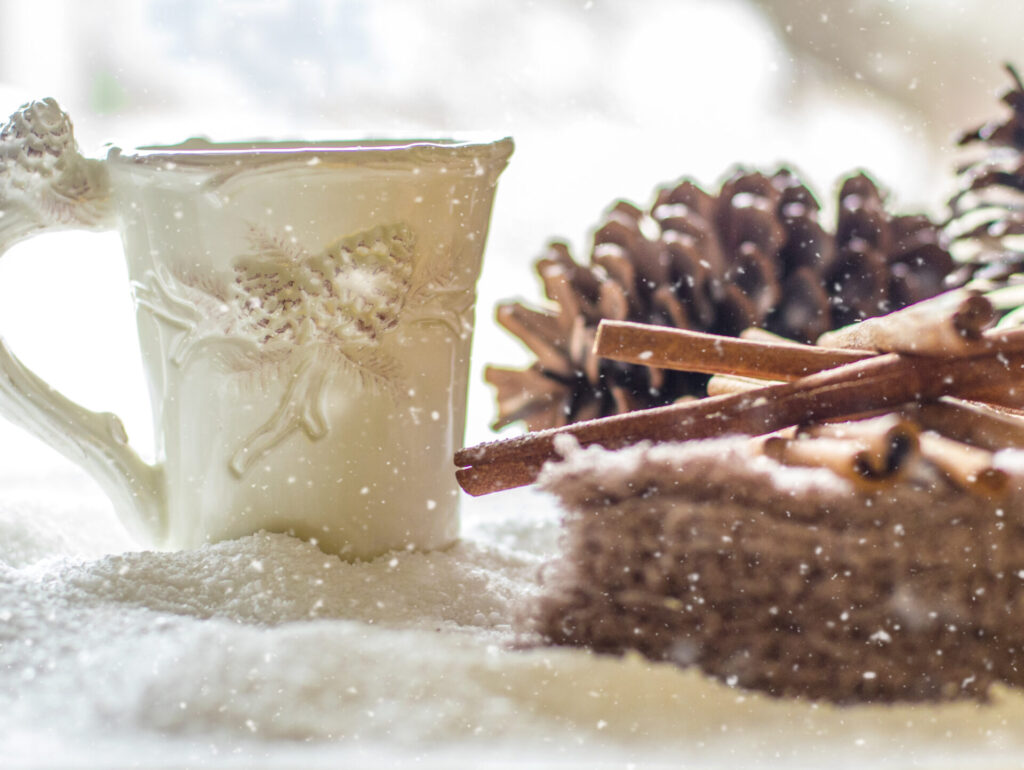
This trend has been brought on by the idea that many people over-indulge during the Western holiday season from late November ‘til January 1 and as a result, they cut out all sugary, heavy, and oily foods after New Year’s Day. It might be more healthful to take the angle of moderation during the holidays, so we don’t throw our digestion out of balance by bingeing and then cutting off the foods that we need (in a balanced way) as soon as New Year’s Day is gone.
That means we don’t need to feel like pumpkin had its moment before December even arrived, and then, after that, it’s passé. That would be a waste of a winter’s worth of fresh pumpkins and winter squash that we could be eating for our good health.
Some of the typical wintertime flavors and aromas that we identify with the season are also very healing! Hopefully, you have a chance to read this before you over-indulge and instead, you can enjoy the healing foods, herbs, and spices of winter during the whole season.
Healing Herbs and Spices of Winter
1. Cinnamon
The top healing spice that reminds us of winter days has got to be cinnamon. Even without bringing on happy memories of winter, it’s an incredible healing spice.
The aromatic bark of the cinnamon tree is what we use as a spice, and it varies, depending on the variety of cinnamon tree from which it comes. The most common type, Cinnamon Cassia, is what you find readily available in most shops and markets. The Sri Lankan variety, however, known as Ceylon Cinnamon, is the most fragrant, because it contains the highest concentration of cinnamon oil. This high cinnamon oil content provides us with the most healing qualities.
Cinnamon is and excellent digestive aid, a natural antibacterial to treat stomach disorders, coughs, and colds. It’s also helpful for diabetics and can be used topically for skin care.
So, don’t hesitate to use as much cinnamon as you want when baking, cooking, and mixing up spiced beverages during winter!
2. Anise Seeds (Aniseed) and Star Anise
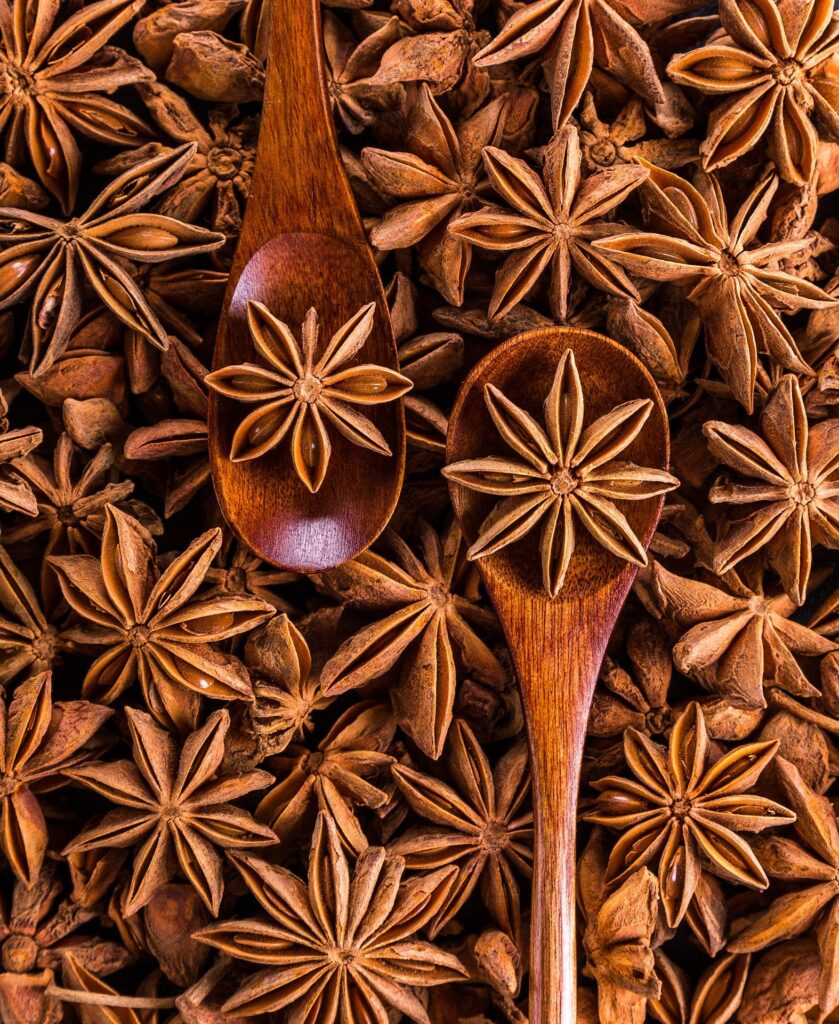
You’re probably familiar with star anise, that lovely star-shaped spice that is a regular ingredient in holiday cooking…particularly in mulling spices for wine or cider, and in desserts like gingerbread.
Anise seeds, or aniseed, on the other hand, are tiny grayish aromatic seeds often used in South American and European holiday cookies and cakes.
Both aniseed and star anise, which feature in Chinese 5-Spice mixes, have long been used in cooking for their fragrant licorice-like flavor and for digestive benefits. Although both of these fragrant spices taste similar because they both contain the same flavor compound, anethole, they are different plants entirely.
Aniseed and star anise have been prominent throughout history to treat respiratory ailments, as a gargle for sore throats, and to soothe digestive problems. Aniseed is an ingredient in digestive liqueurs, such as sweet Mediterranean Anisette, Greek Ouzo, or Italian Sambuca.
Additional health benefits of both types of anise are:
- relieving insomnia
- assisting milk production for lactating women
- fighting bacterial and fungal infections.
- anti-cancer therapeutic (star anise)
4. Rosemary
Rosemary is an herb that is super beneficial to health. With its anti-bacterial and anti-inflammatory properties, it is a great wintertime herb!
The phytochemicals (plant nutrients) in rosemary also counteract depression, which occurs more often in winter months. As with other healing herbs and spices of winter, we can take advantage of the aromatherapy benefits of rosemary oil, as its vapor helps reduce winter congestion. Additionally, apply rosemary essential oil topically to relieve joint stiffness and inflammation.
5. Ginger
Ginger, especially in dried form, features widely in wintertime recipes, like gingerbread, ginger snaps, and ginger in pumpkin recipes.
Ginger is one of the most fantastic medicinal spices we can include in our diets – especially during winter. With its antihistamine and anti-inflammatory properties, ginger alleviates symptoms of congestion and sluggishness during winter months, while soothing headaches and body aches.
In particular, dried ginger (more so than fresh ginger) keeps our bodies warm… which is useful during winter months (as opposed to fresh ginger, which can reduce body temperature).
Aside from its anti-nausea properties that are widely known, ginger is also antibacterial, heart-healthy, anticancer, and great for relieving menstrual cramps.
3. Cloves
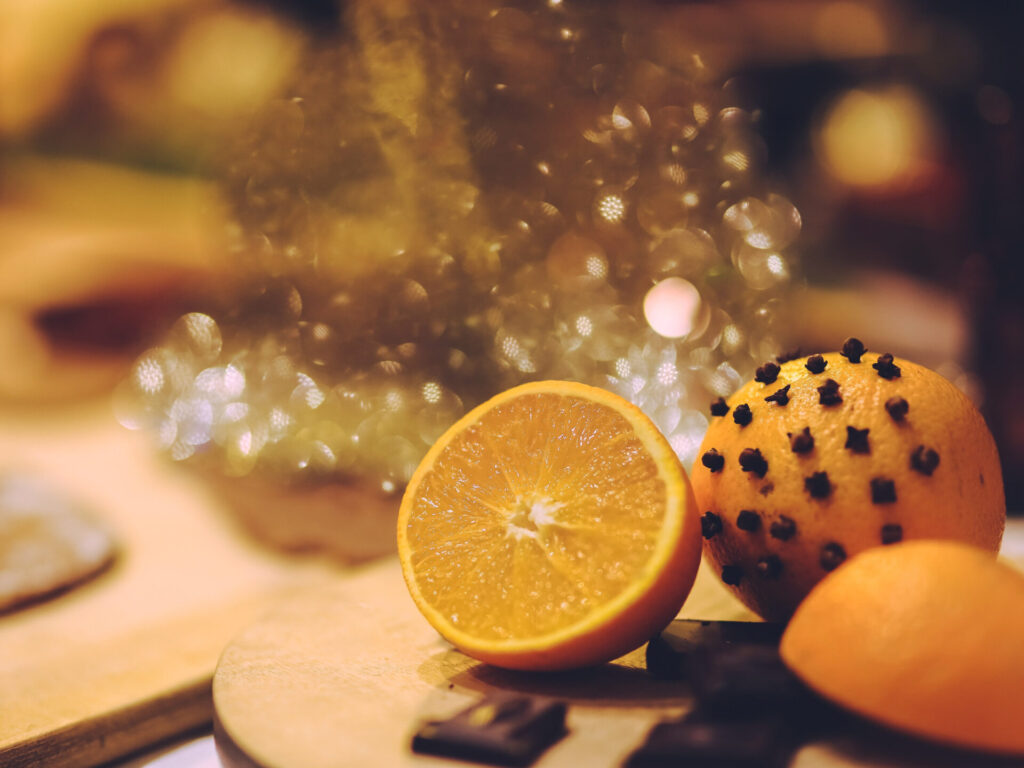
These highly flavorful and pungent little dried flower buds are tasty additions to chai drinks and holiday desserts. They have amazing healing properties as well. Cloves are excellent for digestion and are anti-inflammatory, relieving joint stiffness that often accompanies dry and cold winter weather. Cloves are also expectorant, helping us to cough out congestion when mucous develops due to winter colds or flu.
We can also benefit from the omega-3 fatty acids packed into tiny cloves, and from the antibacterial and immune-boosting properties that cloves possess.
6. Pine and Evergreens
Some of the most amazing and invigorating aromas of winter are the evergreens that fill the air with rich, strong scents. This natural aroma therapy is lovely for the senses and is quite therapeutic. In fact, not only can we enjoy the scents of evergreens, but we can also drink pine needle tea and eat pine nuts!
Let’s start with the aromatic health benefits of pine, fir, spruce, and other evergreens. Inhaled by breathing in the diffused oil, these evergreens provide a sense of calm and well-being, particularly useful in times of stress. As much as we look forward to the holiday season, many people feel stressed during these times. Utilizing the healing power of evergreens is an easy way to dispel unwanted tensions. Evergreen oils are also useful to relieve sinuses and inflammation. They’re also energizing and mood-lifting.
If you have access to natural organic pine needles, it’s a great idea to drink a cup of pine tea. Traditionally used for thousands of years, pine needle tea is excellent for calming nerves and providing mental clarity. It is also a great source of Vitamin C, so is helpful to protect against colds and flu.
Lastly, let’s not forget pine nuts! These precious items are lovingly collected from the forests each winter season and are a real treat…not only for their amazing flavor but also for their health benefits. With a fat content similar to almonds, they are high in heart-healthy nutrients, good for the brain, energy-boosting, and are excellent for skin and hair.
Note: Pine needles from most pine trees can be used for tea, excluding Ponderosa Pine and Norfolk Island Pine (Australian Pine), which are considered poisonous. Other evergreens that are safe to inhale as aromatherapy, such as cypress and yew, are not recommended for internal use. Gerry, from Forest Holidays suggests that a good way to know for sure is to avoid the ones with flat needles.
7. Bayberry
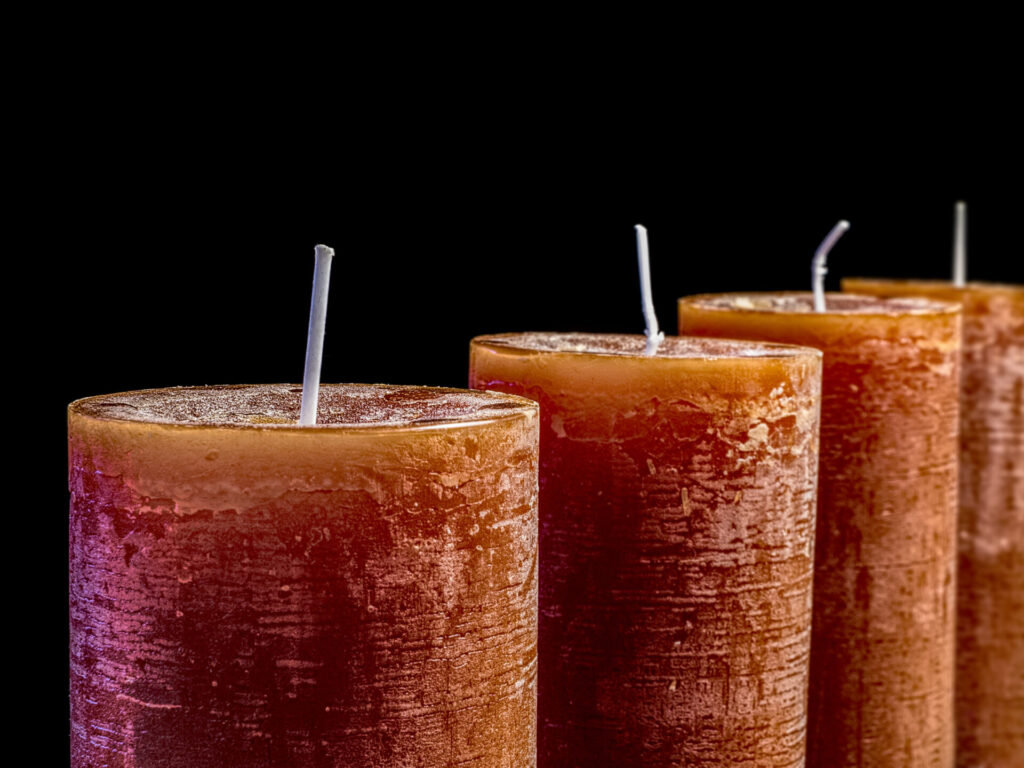
Bayberry is one of those intoxicating seasonal aromas that has long been used in soaps, cosmetics, and candles, evoking memories of home and holidays. It’s the wax from bayberry berries that provides that fantastic scent in candles and soaps.
Bayberry bark root has powerful anti-inflammatory and antibacterial actions and is a well-known treatment for respiratory and sinus ailments.
Bayberry leaves can be steeped as a tea and used to heal stomach issues, improve circulation, and counteract thyroid problems.
So, don’t forget to include bayberry as one of the most useful and inspiring healing herbs and spices of winter.
8. Peppermint
Another powerful scent that we associate with the holiday season is peppermint…from the ever-present peppermint candy canes to the peppermint-infused beverages that seem to go hand in hand with wintertime celebrations. Happily, peppermint is a powerful natural remedy, so we’re doing ourselves a favor when we indulge in peppermint-flavored foods during winter.
Drinking peppermint tea, sucking on natural peppermint candies, and using peppermint essential oil as aromatherapy all provide an energetic “pick-me-up.” You can also breathe in the steam of a cup of peppermint tea or sniff in peppermint oil to help with sinusitis and bronchial ailments.
Peppermint is good for the stomach, as it soothes and calms the muscles of the digestive tract. It’s anti-inflammatory, which is helpful to reduce headaches, and relieve muscle and menstrual pain.
From peppermint-infused hot chocolate drinks to teas, mint candies and more, peppermint is one of the best herbs for winter.
9. Myrrh and Frankincense
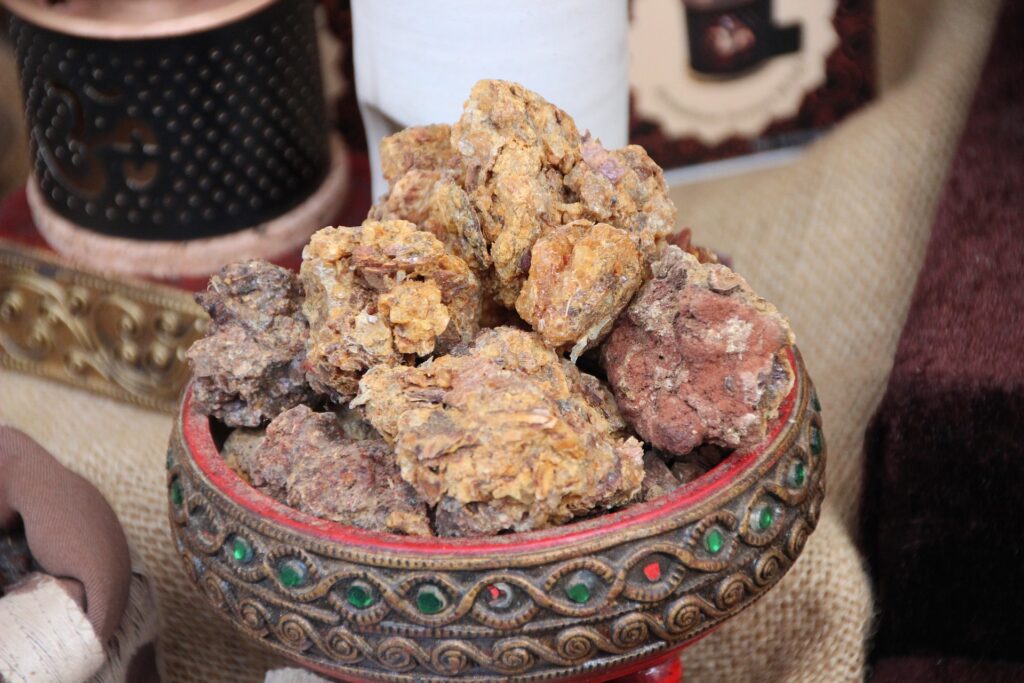
We can’t discuss the healing herbs and spices of winter without including myrrh and frankincense, those two resins that feature in biblical stories of old…particularly associated with the Christmas story.
With their antibacterial, antiseptic, and anti-inflammatory properties, it is no wonder that these two substances have been of great use throughout the ages, especially in the wintertime.
The essential oils of frankincense and myrrh are well known for their ability to relieve depression and tension. They also create a positive energy, when diffused into the air or burned during religious ceremonies, meditation, and prayers.
Both resins are used as ingredients in insect repellents and healing salves, as well as in perfumes. The resin gums can also be chewed for dental health.
10. Oranges
To round out this list, we’ve added in citrus fruits, even though they are not herbs or spices…that’s because tangy, sweet, yummy citrus features heavily in winter aromas and flavorings. Citrus fruits are ready for harvest in the winter months, just in time for us to take advantage of their super-nourishing and healing properties.
Dried citrus shows up in holiday decorations in the form of threaded garlands, and oranges are often studded with cloves for an aromatic tree decoration, like the one in the clove section photo above.
We also enjoy the sunshiney-bright zing that citrus adds to spiced fruit drinks, desserts, salads, and savory dishes during the holidays.
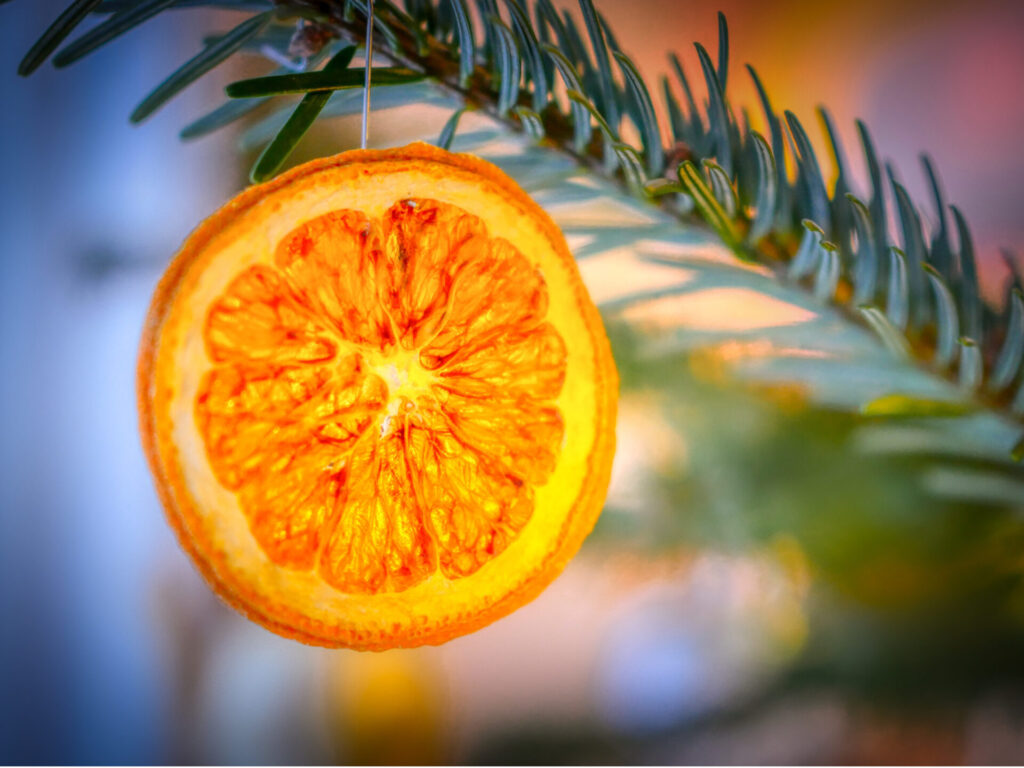
In addition to adding flavor and punch, citrus fruits help cognitive functioning. Their antioxidant components help regulate blood glucose levels and fight cancer cell growth. With a hefty dose of natural Vitamin C, tasty citrus is high in fiber, which is good for digestion and helps weight loss.
Even breathing in the aromatic oils of citrus can be soothing during this busy time of year when many people experience additional tension. So, we can be very thankful for the abundance of citrus that’s available to us during wintertime.
Conclusion
After reviewing the benefits of the healing herbs and spices of winter, let’s remember to enjoy the full winter season. We can do this by continuing to consume the pumpkins, squashes, apples, citrus, herbs, and spices that come along with winter…long after those initial apple and pumpkin pies have made their first appearances at our holiday tables.
Disclaimer: This post is for informational purposes only. Any material herein is the expressed opinion of the authors and is not a substitute for professional advice, diagnosis or treatment, nor has it been evaluated by any regulatory agency. All use of information herein is solely at the risk and discretion of the reader. Have a blog? This post is for sale. Contact us.